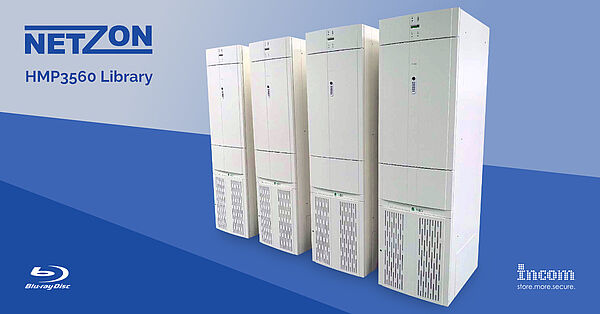For almost 20 years HIT-Storage has been developing the library product range originally taken over from Grundig Zeiss with German engineers in Suzhou, China. Particularly in the project business, the proximity to the developers offers great advantages; solutions can be developed here that are unique.
The latest model in the product family offers, for example, an internal printer for the unique labeling of individual media. The HMP3560 has 35 magazines, which can be placed in a separate area for removal by robotics. To protect the data from unauthorized access, the removal can be secured by a fingerprint sensor and numeric code keyboard. With 560 Blu-ray media, the system currently offers 71.68 TB nearline and the significantly larger P1 Library with up to 10,368 media even up to 1,327 TB storage capacity.
The solution developed for a customer in the audio/video sector is of particular interest to customers who want to additionally back up project data or take completed project data completely offline. In large architecture and engineering offices, university institutes, but also in hospitals there are many possible applications for the systems.
The advantages are manifold, because for secondary data, which is rarely accessed anyway, the optical libraries can enormously reduce the data center's energy consumption and even avoid it altogether when magazines are removed. In addition, the data backed up on the WORM data carriers is protected against changes and attacks by malware and, due to the long service life of the Blu-rays of up to 100 years, does not usually need to be migrated. Theoretically, the archive can also grow endlessly using removable magazines or cartridges and software with offline management.
